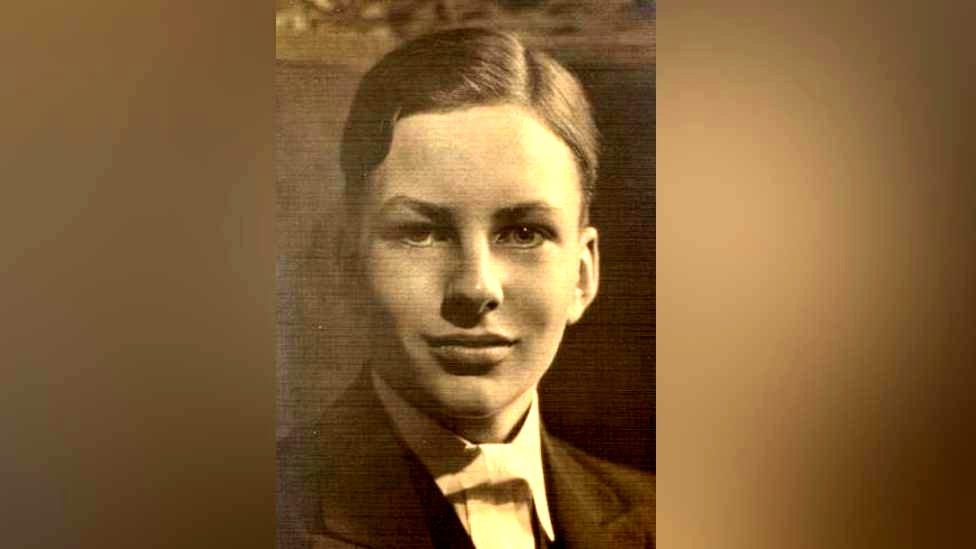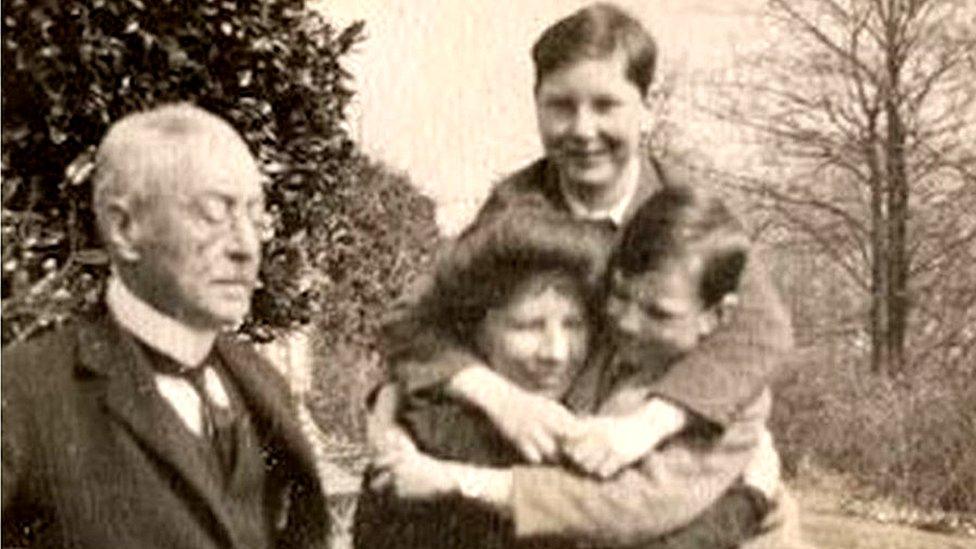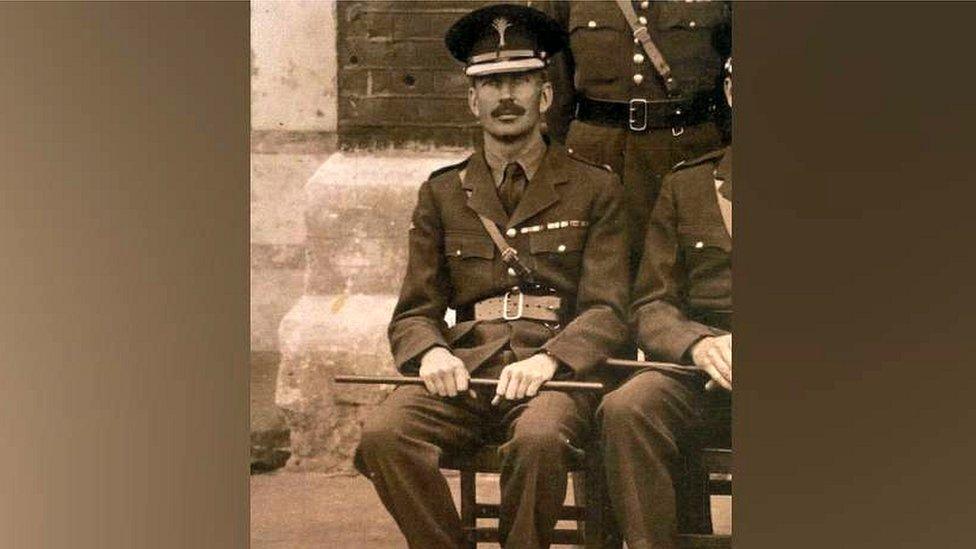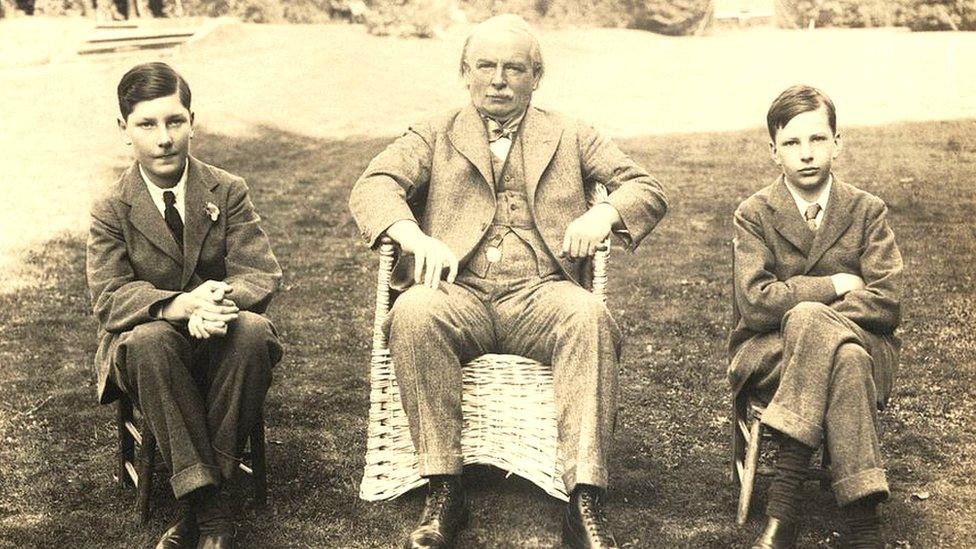A real-life Welsh James Bond: The spy who became a monk
- Published

Henry Coombe-Tennant attended Eton and Cambridge
Have you watched the new James Bond film and thought it was a little too far-fetched?
Well, read the story of Henry Coombe-Tennant's life and think again.
Born in Neath in 1913, Henry was a decorated World War Two hero, and worked for both the Special Operations Executive and MI6.
In later life, in a dramatic departure from the traditional spy persona, he became a Benedictine monk.
His fascinating story has been charted by historian and author Bernard Lewis in a new biography, Wales' Unknown Hero: Soldier, Spy, Monk - The Life of Henry Coombe-Tennant.
He was born into the wealthy Tennant family, who created the Tennant canal in order to ship coal and processed metals from the south Wales valleys to Swansea in the 19th century - giving their name to the Swansea district of Port Tennant.
He attended Eton and Cambridge, earning a double first in moral sciences, and when he came of age in 1934 his net worth was estimated at £50,000 - around £3m in today's money - with an annual allowance of £4,000.
'The next messiah'

Most mothers have high hopes for their children - but Henry's had messianic ambitions
Yet Mr Lewis says none of this was by any means the most unusual aspect of Henry's early life.
"His family were friends with Prime Minister David Lloyd George," he said.
"His mother Winifred was a JP [justice of the peace], suffragist, political activist and also a noted psychic medium, and Henry was the result of her extra-marital affair with another former prime minister's brother, Gerald, brother of Arthur Balfour.
"But this was no ordinary affair, the pair set out deliberately to conceive a child in the belief, with help from the spirit world, that Henry would be the next messiah."
Mr Lewis added that neither Henry nor his brother knew of his mother's plan until the 1940s.
A reluctant soldier
In 1936 Henry joined the Welsh Guards, and was apparently a "reluctant soldier" for whom World War Two came about at "just the right time."
"Henry wasn't much of a physical specimen as a child - by all accounts he never excelled at sport and was a quiet and slight boy, but with an iron will and desire for action."
He had considered quitting the Army in the late 1930s, but when war broke out in 1939 he instead soon found himself in action in the Netherlands and Boulogne.

He was captured and marched off to Warburg prisoner-of-war camp in central Germany
His Great Escape
In May 1940, at the Hook of Holland, he helped keep a vital road to the port open, allowing the Dutch royal family and government to escape before the Nazis reached them.
A fortnight later he was taking part in a desperate rear-guard action, holding up the German army at Boulogne and helping hundreds of thousands of Allied troops escape at Dunkirk.
There, he was captured and marched to Warburg prisoner-of-war camp in central Germany, from where he would escape two years later.
"Henry and his fellow prisoners discovered that the electrics in the prisoners' hut were run off a spur from the perimeter floodlights, so he and 20, 30 or so others fused them, and made it over the wire to freedom," explained Mr Lewis.
Of the 30 who escaped Warburg, only Henry and two others made it back to Britain, via the Netherlands and then by train through Belgium, France, neutral Spain and finally to Gibraltar, where they were transported back to the UK.
A 'natural progression' to becoming a spy
After a brief period of rest, which included a chance meeting with the Princess Elizabeth and tea with the King and Queen at Sandringham, Henry left the Welsh Guards. His experience of evading capture behind enemy lines saw him recruited into the Special Operations Executive (SOE), which ran missions to support the French Resistance.
In the months which followed the D-Day landings, he operated hundreds of miles into German occupied territory, helping to disrupt train lines and enemy positions.
"After the war it was a natural progression for Henry to move from SOE and the Army to becoming an MI6 spy", said Mr Lewis
"Initially, he probably worked to counter the activities of Russian agents at the Hague in Holland, and in trying to influence his Dutch military contacts against sending troops to the Pacific in response to a territorial dispute in that area."
Although much of his post-war file is still classified, it is known that he then operated out of Palestine around the time of the formation of Israel in the late 1940s, before moving on to Iraq in 1959.
However, something happened to him in Baghdad which radically altered Henry's world view.

Henry's family were friends with Prime Minister David Lloyd George
A mission from God
Having been agnostic most of his life, Henry joined the Catholic church when he returned to Britain in 1960, becoming a Benedictine monk at Downside Abbey near Bath.
"All his files are still under lock and key in the MI6 archives," added Mr Lewis.
"He did give a talk in 1965 where, in his lecture notes, he said that in the Baghdad of 1959 he underwent physical and mental suffering which led to him taking up holy orders.
"Had he been detained and maybe tortured by the Iraqi police force or the agents of another country? Russia was very active in Iraq at that time - sadly, we simply don't know."
Although Henry was an active monk until his death in 1989, he never spoke again about his life as a spy.
It will be another 40 years until his file is declassified, when we may finally know for certain what else happened to Henry Coombe-Tennant.
It was, nevertheless, a truly remarkable life.
- Published7 May 2019

- Published17 February 2014

- Published2 August 2016

- Published12 March 2015

- Published13 March 2015
